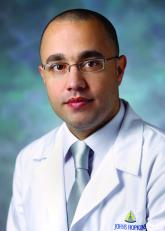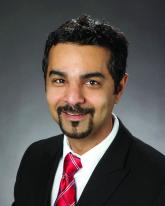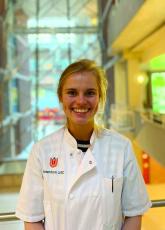News

Crohn’s disease indicators manifest years before diagnosis
- Author:
- Will Pass
Complicated CD at diagnosis is associated with a distinct serologic profile years before diagnosis.
News

AAP advises against low-carb diets for children with diabetes
- Author:
- Will Pass
Pediatric patients with type 2 diabetes should focus on reducing nutrient-poor carbohydrate intake, while those with type 1 diabetes should only...
News

Frequency and duration of GERD symptoms associated with poor sleep
- Author:
- Will Pass
Study findings suggest that treating gastroesophageal reflux may reduce comorbidities associated with poor sleep quality.
News

IBD study characterizes biologic adherence, confirms nonadherence risk factors
- Author:
- Will Pass
“Identifying patients at risk for nonadherence is important to develop strategies to improve adherence.”
News

New AGA CPU focuses on gastric peroral endoscopic myotomy for gastroparesis
- Author:
- Will Pass
Clinical practice update authors suggest that G-POEM should be covered by health insurance.
News

Mucosal exposure device boosts AI-assisted detection of adenomas
- Author:
- Will Pass
Using the mucosal exposure device increased adenoma detection rate by 12% without impacting safety or withdrawal time.
News

Tips for addressing uptick in mental health visits: Primary care providers collaborate, innovate
- Author:
- Will Pass
Clinical psychologist recommends primary care providers screen all adult patients for depression and anxiety.
News
Study explains link between fatty liver and CRC liver metastasis
- Author:
- Will Pass
Findings of a new study suggest that CRC patients with nonalcoholic fatty liver disease may respond differently to treatment than those without...
News

Refined incidence rate of HCC with alcohol-associated cirrhosis encourages surveillance
- Author:
- Will Pass
Cumulative risk of HCC in patients with alcohol-associated cirrhosis was 3% after 5 years, and 9% after 10 years.
News

Clinical Practice Update: Alpha-gal syndrome often causes GI issues without anaphylaxis, skin changes
- Author:
- Will Pass
“It is important for gastroenterologists to be aware of this condition and to be capable of diagnosing and treating it in a timely manner.”
News

AGA clinical practice update addresses role of endoscopic ultrasound–guided gallbladder drainage in acute cholecystitis
- Author:
- Will Pass
Selecting the optimal drainage method depends on patient characteristics.
News

PNPLA3 genotype predicts cirrhosis in NAFLD
- Author:
- Will Pass
Those with diabetes and indeterminate FIB4 scores may have the same risk of cirrhosis as patients with a high FIB4.
News

Liquid albuterol shortage effects reduced by alternative drugs, similar shortages may be increasingly common
- Author:
- Will Pass
The shortage of 0.5% albuterol sulfate inhalation solution gained increased attention earlier this month when Akorn Pharmaceuticals – one of just...
News

Review explores the boundaries of endoscopic resection for esophageal adenocarcinoma
- Author:
- Will Pass
Technical advances are expanding the population of patients who are candidates for endoscopic resection of esophageal adenocarcinoma.
News

Daily socialization may extend lifespan in elderly
- Author:
- Will Pass
The benefit of daily socialization was detected regardless of person’s health status at baseline.
